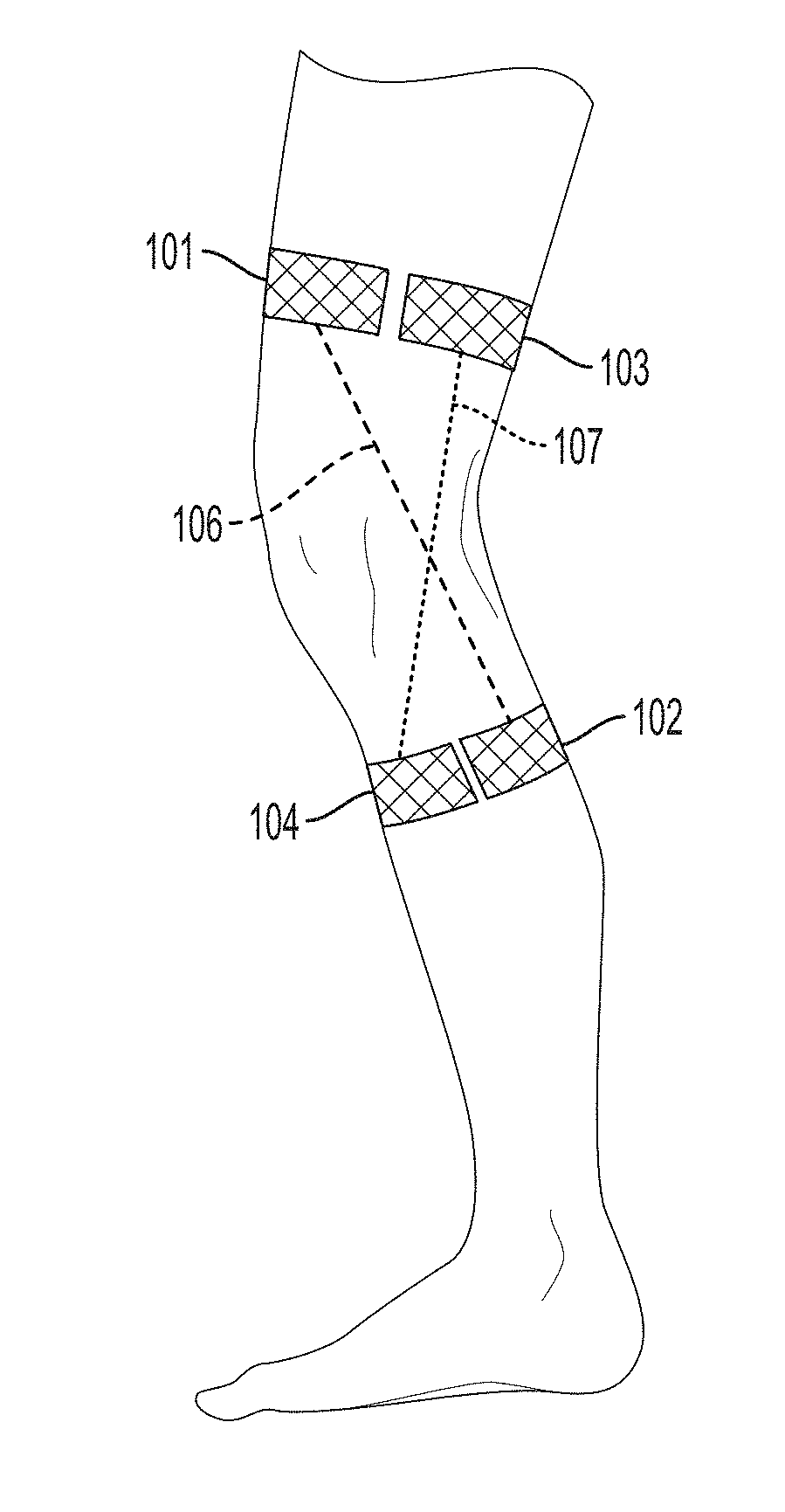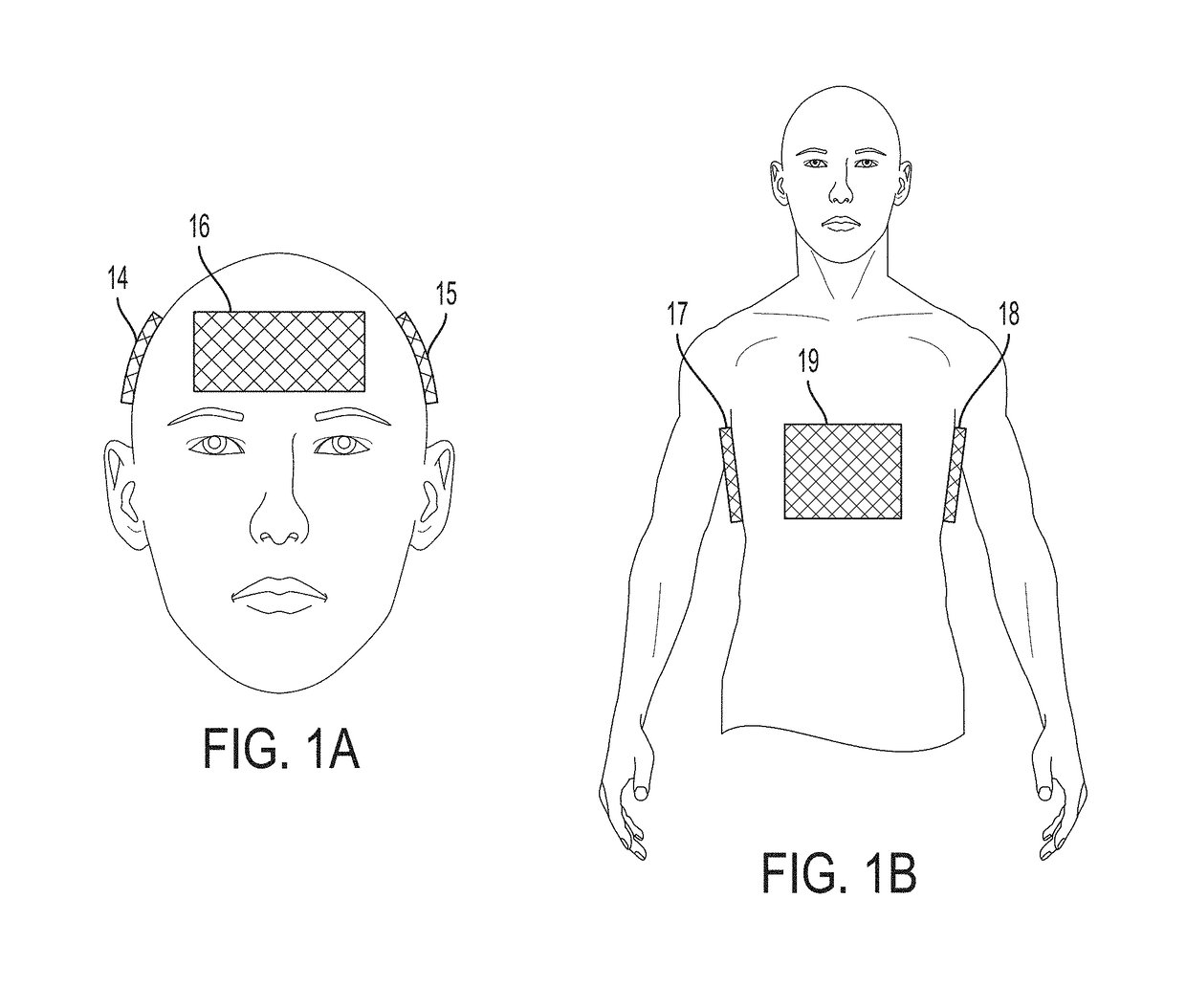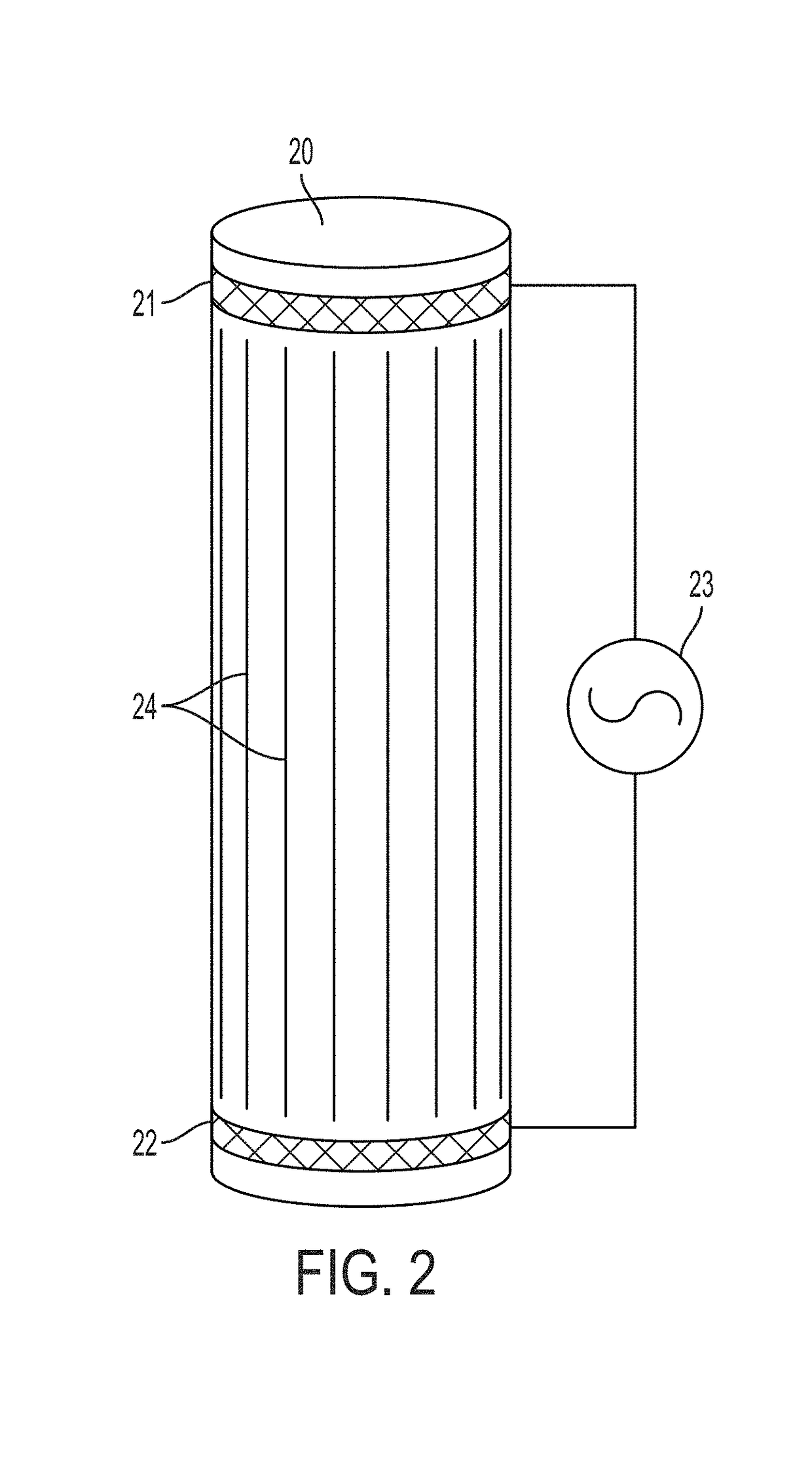Arrays for Longitudinal Delivery of TTFields to a Body
a technology of ttfields and arrays, which is applied in the field of arrays for longitudinal delivery of ttfields to the body, can solve the problems of uncomfortable and/or impractical use of both difficulty or inability to use a/p and r/l electrodes,
- Summary
- Abstract
- Description
- Claims
- Application Information
AI Technical Summary
Benefits of technology
Problems solved by technology
Method used
Image
Examples
Embodiment Construction
[0053]The embodiments described below overcome the aforementioned limitations of using A / P and R / L electrodes by including at least one pair of electrode arrays configured to generate a longitudinal field in the target region. Note that as used herein: (1) in the context of the head and main portion of the body, the longitudinal axis is perpendicular to both the anterior-posterior axis and the lateral axis; (2) in the context of a leg or arm, the longitudinal axis is the proximal-distal axis; (3) the term “longitudinal field” refers to a field which runs in the same general direction as the longitudinal axis, and is not limited to fields that are exactly parallel to the longitudinal axis; (4) electrode arrays designed to generate longitudinal fields are referred to as “longitudinal arrays”; and (5) conventional electrode arrays designed to generate fields that run generally between either the left and right sides of the subject or the front and back of the subject are referred to as...
PUM
 Login to View More
Login to View More Abstract
Description
Claims
Application Information
 Login to View More
Login to View More - R&D
- Intellectual Property
- Life Sciences
- Materials
- Tech Scout
- Unparalleled Data Quality
- Higher Quality Content
- 60% Fewer Hallucinations
Browse by: Latest US Patents, China's latest patents, Technical Efficacy Thesaurus, Application Domain, Technology Topic, Popular Technical Reports.
© 2025 PatSnap. All rights reserved.Legal|Privacy policy|Modern Slavery Act Transparency Statement|Sitemap|About US| Contact US: help@patsnap.com



